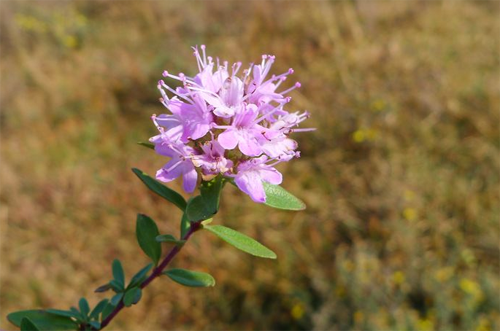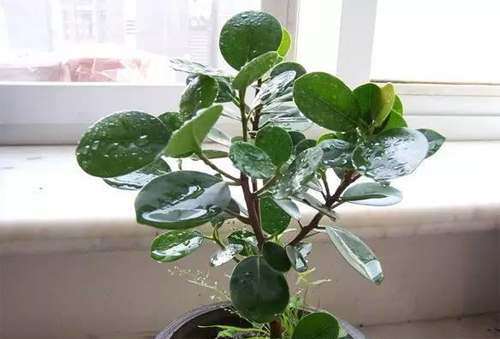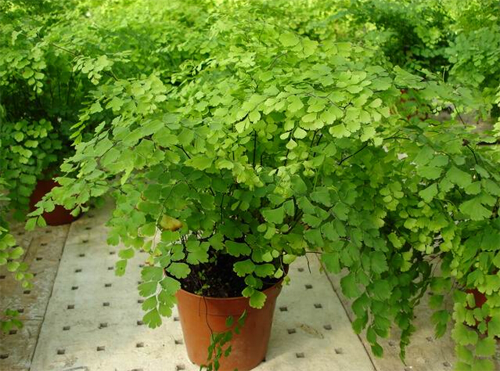What are the effects and functions of the cultivation and culture methods of thyme
Thyme is a kind of plant, and it has fragrance. It would be very good to have a plant at home. Let's take a look at the cultivation and cultivation methods of thyme. What are the functions and effects of thyme?

Cultivation and culture methods of thyme:
1. Selection of potted soil.
It likes the sunny environment and is most afraid of stagnant water, so potted soil is usually cultivated with peat soil and perlite at 1:1, and humus soil with fine sand is also good. 2. Temperature
The best temperature for its growth is 20-25 degrees, so it must be ventilated, shaded and cooled in summer. if your thyme plant is too luxuriant, you also need to cut off too many branches before flowering to avoid too dense affecting ventilation.
3. Proper fertilization
Thyme does not need too much fertilizer, generally give organic fertilizer twice in spring and autumn, of course diluted fertilizer is also fine.
If the temperature is high in summer, it is not the best growing period for thyme, so do not apply fertilizer, and it is the same in winter.
If your thyme blossoms and bears fruit smoothly, then the plant is easy to wither after fruiting, so you can cut off some branches properly for cutting.
The propagation method of thyme:
Generally sowing and propagation, of course, cutting or ramet is also possible. 1. Sowing seeds
Sowing can be sowed in spring and autumn, preferably around April, its seeds are small, soaked in water for 4 to 6 hours and scattered evenly on the slightly moist sandy soil. Can hold up the plastic film to keep warm and moisturize.
Generally 10-15 days can lift the film, then sprouted, still to keep the basin soil slightly moist state, watering carefully, the seedlings are easy to lodge.
Let the seedlings see a little bit of 1.1 sunlight in the morning and slowly adapt to a little more light.
2. Ramet propagation
Ramet propagation needs to raise thyme plants for more than 3 years, and April is also the most suitable. Of course, it is OK to turn cool in autumn. Dig out the mother plant, and each small plant should have 4 or 5 buds.
After planting, it can be transplanted, and an appropriate amount of organic fertilizer or compost can be added as base fertilizer.
3. Cuttage propagation
Thyme cutting is easy to take root and sprout, so it is the most simple and effective method in reproduction, suitable for many flower friends to try, and can be carried out in spring, summer and autumn.
Generally, it is necessary to cut a strong rhizome with a length of 5 to 7 centimeters, and there must be 3 to 5 growth nodes in each section in order to better root and sprout.
Strip propagation is also OK, it is easier to press a section of rhizome with growth nodes into the soil, and then cut off the cuttings after taking root.
The efficacy and function of thyme:
Some people call thyme "ground pepper", "mountain pepper" or "thyme". It is the most common in Asia and Europe, with petite leaves and slender roots, which can not only repel mosquitoes (the stems and leaves are broken and sprayed with water, which is very effective). The medicinal value is also very good (for colds and coughs, headaches, toothache, indigestion and high blood pressure).
A long time ago, thyme was used as a spice and medicine in daily life. If you see a piece of thyme blossom, you will already smell the fragrance, but it will not be pungent. It is a very mild and rich fragrance.
Thyme florescence:
It is the full bloom of thyme (July-August). How does it feel to see the pink and purple flowers?
This is the end of the introduction about the efficacy and function of thyme and the method of breeding. Hurry up and give some aroma to your home.
The cultivation and cultivation method of thyme in China, thyme is also known as ground pepper, ground pepper, mountain pepper, thyme and so on. Thyme is a semi-shrub with fragrant stems and leaves. Often used as flower mirrors, flower beds, rock gardens, spice gardens or sunny ground cover plants. It is very suitable for edible seasoning and has high medical value. The cultivation environment of thyme should have plenty of light, otherwise the plant will grow in vain. The requirement of soil quality is not high, but it needs good drainage. Peat moss or cultivated soil mixed with perlite can be used. The most suitable temperature for growth is from 20 ℃ to 25 ℃. Special attention should be paid to the high temperature in summer. When the temperature is high, the plants can be slightly pruned for ventilation and placed in a cool place for summer. Fertilizing can be made with organic fertilizer. When the growth is exuberant in spring and autumn, Huabao is diluted 1000 times and irrigated every 7-10 days. The plant is weak in summer, so it is best not to apply fertilizer. The branches and leaves can be cut and used at any time before flowering, otherwise the plant is easy to die after flowering and seeding. If it is harvested in large quantities, it can also be dried and preserved. Thyme can be propagated by sowing, cutting, striping and splitting, and it is very suitable for reproduction except in summer. If you breed with seeds, because the seeds are very small, it is better to sow them, you can first fully wet the medium and spread the seeds evenly on top. When this leaf grows 4-6 leaves, it can be moved to a smaller container (such as hole planting plate), and then moved to a 3-inch basin when the root system of the plant is well developed. when planting, 5-10% organic patch can be added to the culture soil. Cuttings can take terminal buds as cuttings, with 3-5 nodes is better, but be careful not to take the Lignified branches, the rooting ability is poor. The cultivation of thyme, scientific name: Thymus spp. English name: Thyme family: Labiatae use part: cut off the top part of about 5 cm 10 cm long before flowering, and then put it in the freezer after drying. Flavor characteristics: mild, slightly bitter taste, a little irritating, strong grass flavor. Home use: 1. Fresh branches, leaves and flowers can be cut directly and inserted in a vase to give off fragrance. The leaching solution can be made into simple disinfection water by soaking in water. two。 Dried stems and leaves can be used as spices for bacon or placed in a small cloth bag in the corner of the room for deworming effect.
Cultivation and utilization of thyme 1. Introduction and cultivation history the origin is widely distributed in the Mediterranean, and the economic cultivation is the most in southern Europe. The history of the use of thyme is very old. The English Thyme evolved from Greek, meaning to have courage and to worship the gods. At that time, it praised a person for having the courage to say that he smelled of thyme. In cooking, thyme is called a "mixer", which means being able to pull together the taste of food. This may be because its taste is mild and not very exciting, and it also has antibacterial and antiseptic effects. Ancient Egypt preserved mummies as one of the ingredients of embalming oil. In the local area, most people have rarely heard of thyme, let alone seen it, because its small leaves are small and lying on the ground, it looks like weeds, but it is not as strong as weeds. It is easy to die if it is watered too much or is accidentally destroyed. But its aroma is softer, and those who are not used to the strong smell of other herbs are advised to start with thyme first. The leaves of thyme are small and sparse, and the leaf margin is curled. Second, the plant height varies according to the variety, about 20-50 cm. Except for broad-leaf thyme, the leaves of other varieties are very small, oval, slightly fleshy, some species have short villi, leaf edges curl slightly to the back, flowers are very small, pink or white, 7 flowers gather in the axils of the leaves at the top of the branches, and the old branches show light brown due to mature Lignification, and the whole plant has an aromatic taste. There are more than 100 varieties of thyme. At present, the common varieties in Taiwan are thyme, primrose, lemon thyme and variegated thyme. Among them, there are many varieties of incense, and some documents introduce it independently from thyme. 3. Cultivation method thyme is suitable for growth at a temperature between 20 and 25 ℃. This habit makes it necessary to carefully choose the time when it is cultivated in Taiwan. If the plant is usually weak in summer, it can only be cultivated in cool areas, or in a shady place, and after turning cool in autumn, it will be placed in a place with sufficient sunshine, which is more suitable for thyme's growth and development. In terms of cultivation media, thyme leaves are thick and fleshy, so it is not resistant to wet media, so if peat soil is used as the cultivation material, about 20% of the medium ingredients that are convenient for drainage should be added. Watering is the same thing. It is better to dry a little and then water it, rather than being wet all the time, otherwise the root can not be strong and stretch to function, the medium is always wet, the ventilation is poor, and the plant certainly does not grow well. In particular, thyme grows slowly and does not need too much fertilizer. With peat as the medium, about 510% mature organic fertilizer can be added. After the plant grows up, branches are cut and used, and when new buds begin to grow, it is appropriate to irrigate 1000 times liquid fertilizer every 1-2 weeks, and the summer growth is weak. At this time, fertilization can easily lead to root rot and death. The cultivation of thyme mainly includes sowing, cutting, striping and splitting. The seeds are imported from abroad, and the sowing time is between autumn and spring. After fully wetting the clean medium, it is appropriate to sow it and put it in a shady place after sowing. The medium must have sufficient humidity before germination. When 2-3 pairs of leaves grow after germination, they should first be transplanted to 128 cuttings, and then be changed to 9 cm pot after full development. It is worth noting that some varieties such as thyme can not be cultivated by sowing, otherwise the offspring will not have the character of variegated leaves. Cuttage method is very easy to root, easy to breed, in order to achieve consistent quality in mass production, cutting 3-5 cm long cuttings with top buds can survive, but the rooting speed is slow and the root group is less. in addition, do not cut the Lignified branches cuttings, the rooting rate is not good, cuttings are cut in 128 cuttings to facilitate transplanting after survival. The striping and split method is that the branches will automatically grow roots when they touch the ground, and the direct cutting is an independent plant, which is more suitable for home gardening growers. Fourth, harvest and make use of thyme to cut branches and leaves, and do pruning work at the same time. If the branches are not trimmed and blossom after maturity, it is easy to die after bearing seeds, so the action of harvesting and renewal is necessary, and it can also promote the same length of branches. It is easy to cut off the branches by hand at the next harvest, but be careful not to cut off the xylem in order to take into account the harvest. It should be cut at least where 4 or 5 leaves are retained, because the regeneration ability of the aged part of the base of the branch is poor and the whole plant is easy to die. The harvested branches are brushed with clean cold water, get rid of excess water, and can be used. for long-term preservation, put them in a plastic bag with a cut down, not sealed, and refrigerated. The use of thyme is mainly fresh branches and leaves, which can be eaten directly, used as spices when conditioning in the kitchen, and can also be extracted and processed as bath products. In pharmacology, thyme can improve nose and throat discomfort, folk medicine to help digestion, diuresis, drive out roundworms and other effects, the famous mouthwash Li Shi Lin (Listerine) contains thyme, but the total amount of consumption should not exceed 10 grams a day.
- Prev

What's the nickname of the culture method of cash cow?
As soon as the cash cow hears this name, it is amazing, that is, the meaning of recruiting money, such a good implication, we all like breeding very much, what is the breeding method of the cash cow? What's the nickname of the cash cow? The cultivation method of cash cow: shade
- Next

Culture methods and matters needing attention of Dryopteris Dryopteris what to do when the leaves are dry and scorched?
Dryopteris is very popular in recent years. Many people like farming very much and look good. What are the breeding methods and precautions of Dryopteris? In the process of breeding, what should I do if the leaves are dry and scorched? Culture methods and matters needing attention of Dryopteris Dryopteris: pot soil selection, pot cultivation
Related
- Fuxing push coffee new agricultural production and marketing class: lack of small-scale processing plants
- Jujube rice field leisure farm deep ploughing Yilan for five years to create a space for organic food and play
- Nongyu Farm-A trial of organic papaya for brave women with advanced technology
- Four points for attention in the prevention and control of diseases and insect pests of edible fungi
- How to add nutrient solution to Edible Fungi
- Is there any good way to control edible fungus mites?
- Open Inoculation Technology of Edible Fungi
- Is there any clever way to use fertilizer for edible fungus in winter?
- What agents are used to kill the pathogens of edible fungi in the mushroom shed?
- Rapid drying of Edible Fungi

